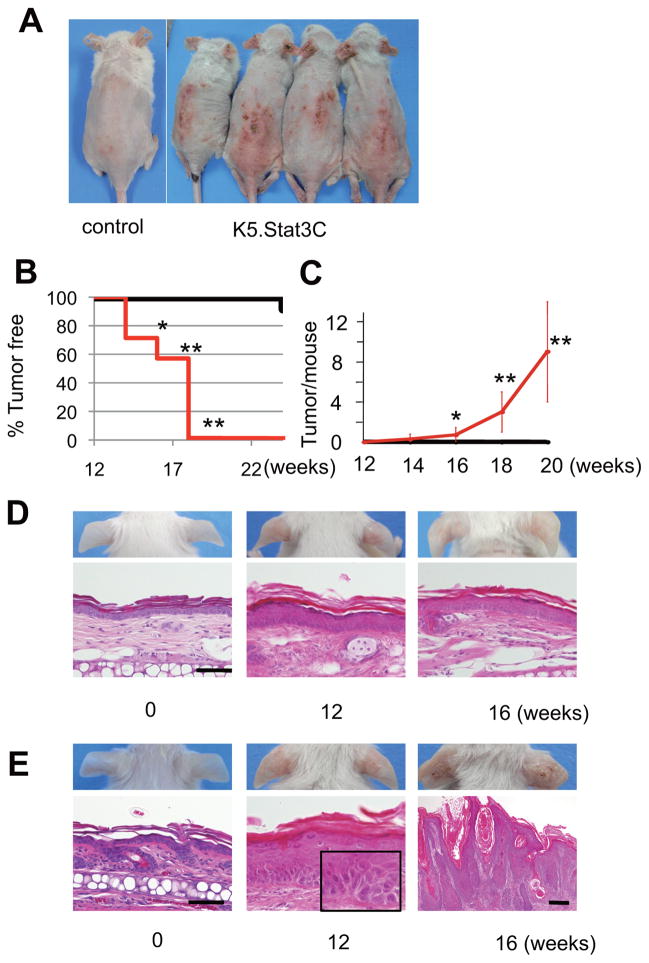Figure 1.
K5.Stat3C transgenic mice are prone to UVB-induced skin cancers. (A) Development of skin cancers in K5.Stat3C mice at 18 weeks of UVB irradiation. At this time point, SCCs are present on the dorsal and ear skin of all K5.Stat3C mice tested, while no tumors are observed in non-transgenic control mice. (B, C) Percentage of mice without skin tumors (B) and the average number of skin tumors per mouse (C; mean ± SD) over time with UVB irradiation. black lines, non-transgenic mice (n = 12); red lines, K5.Stat3C mice (n = 7). *, p<0.05; **, p<0.01; Mann-Whitney U-test. (D, E) Representative images and corresponding histology of ear skins from control mice (D) and from K5.Stat3C mice (E) at 0, 12 and 16 weeks of UVB irradiation. K5.Stat3C mice show atypical cells harboring nuclear hyperchromatin (E, inset) at 12 weeks, and progressive SCC at 16 weeks. No cell atypicality or cancer in the epidermis is observed in control mice over this same time period, except for mild acanthosis. Scale bars in D, E, 50μm; except for that in the right bottom panel of E, indicating 200μm. Inset, an enlarged magnification of the epidermis showing atypical keratinocytes.

